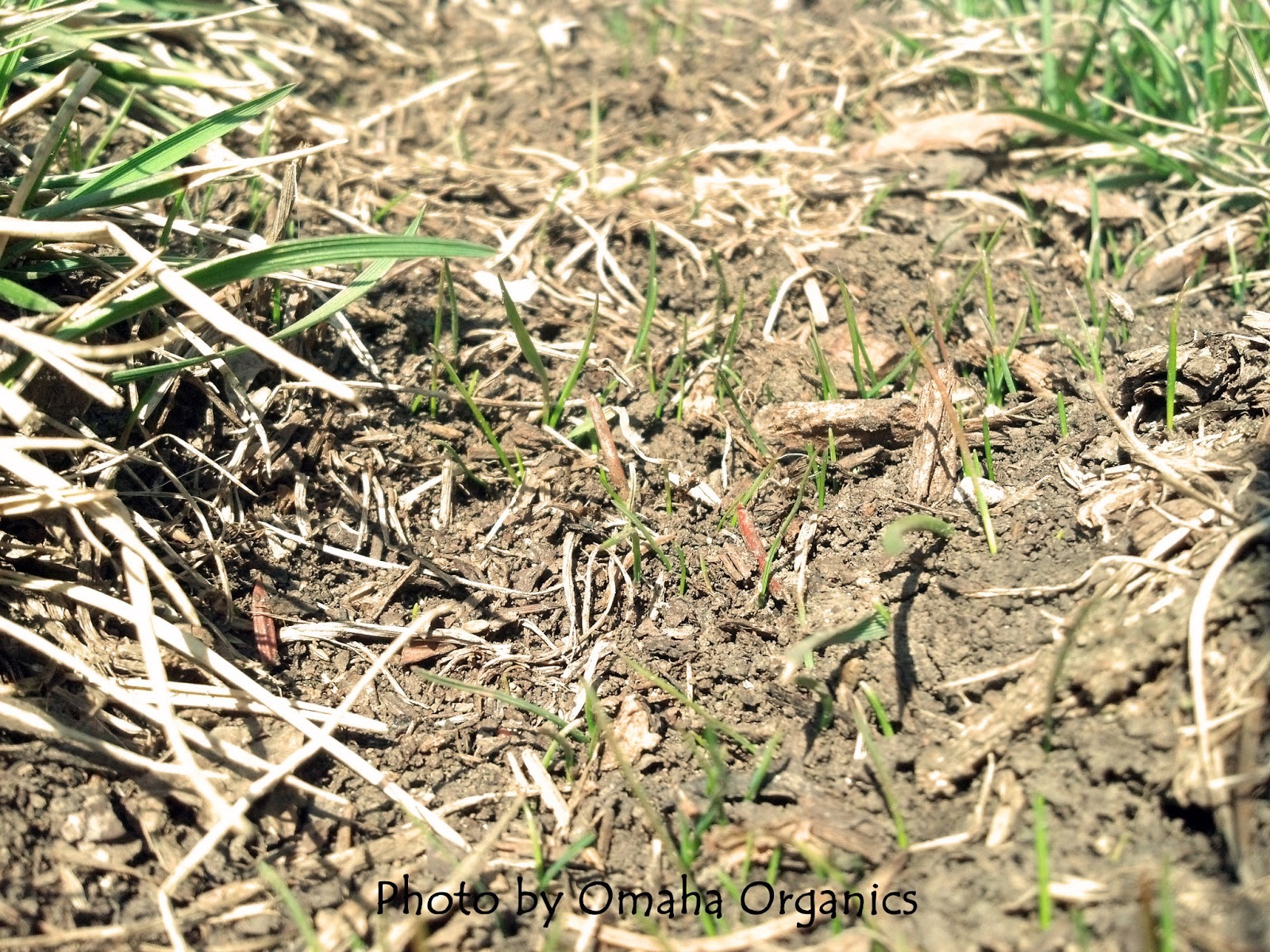Dormant Seeding of Turfgrass in Late Winter
Seeding of cool-season turfgrasses such as tall fescue and Kentucky bluegrass is recommended in late August – through mid September in Missouri. This timing allows seedlings enough time to germinate and mature prior to the frigid temperatures of winter, and spares them from the brutal heat and disease pressure of the summer. If you have a sparse or bare area that needs renovating, and have missed this window it’s probable weeds will soon infest. Now is the time to do something about it.

Bare areas, like this one, can be dormant seeded in late winter to take advantage of the first available spring germination temperature.
Dormant seeding is the practice of sowing during temperatures not suitable for germination, in the expectation that germination will occur when temperatures rise to suitable levels in the spring. Field trials at Purdue University (Reicher et al, 2000) demonstrated dormant seeding of Kentucky bluegrass or tall fescue in November, December or March can be effective, and reduced the establishment time compared to seeding in April or May. The idea is to beat the weeds to the punch, and take advantage of the very first opportune environment for turfgrass germination. The weed seeds are there and waiting to germinate in the open space; why shouldn’t your desired turfgrass seed be there ready to germinate and compete along with them? In addition, the jump on turfgrass maturity will reap benefits later, as the extra few weeks will allow for greater resistance to turfgrass diseases that can completely wipe out a stand of seedlings in late spring/early summer.
With Missouri’s broad temperature swings in late fall and early winter, a late winter timing for dormant seeding may be most appropriate. Soil temperatures will normally remain below the germination range in February or March until it’s go-time in the spring, therefore reducing the overall time of dormant seed in the field and minimizing the chances for winterkill. When attempting a dormant seeding, seedbed preparation is still very critical for success. Proper seed/soil contact is a necessity so removing any vegetation with a strong hoe or rake will be necessary.
Crabgrass control is difficult with any dormant seeding, and is even more troublesome with a later spring seeding. If herbicide use is necessary during the spring, a pre-emergent herbicide application may not be possible as most will inhibit seedling germination and cause injury. Dithiopyr has pre-emergent and some early post-emergent activity, and may be applied later in the season when hopefully most turfgrass seedlings have established. Also, consider alternative pre-emergents such as siduron, or post-emergent applications of quinclorac or mesotrione. As an organic solution, corn gluten meal should be treated with the same care as pre-emergent herbicides and applied as late as possible on a mature turfgrass stand.
Current weather patterns are conducive for dormant seeding as the soil is not frozen, and no snow or heavy freezing events are in the forecast. If you have some sparse areas, take advantage of this period and sow some turfgrass seed to compete with spring weeds.



Leave a Reply
You must be logged in to post a comment.